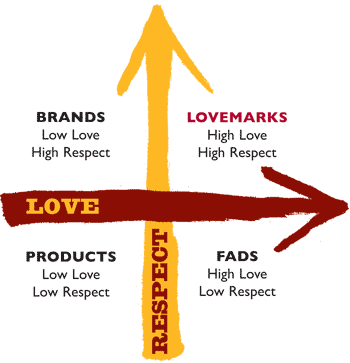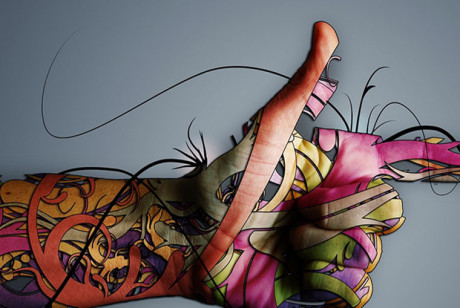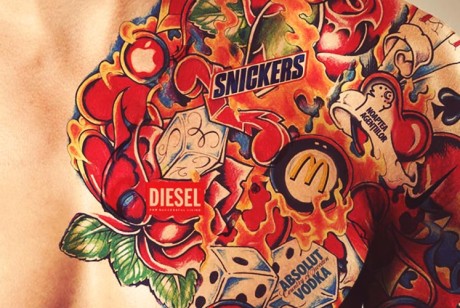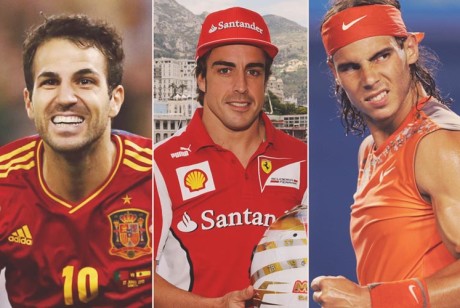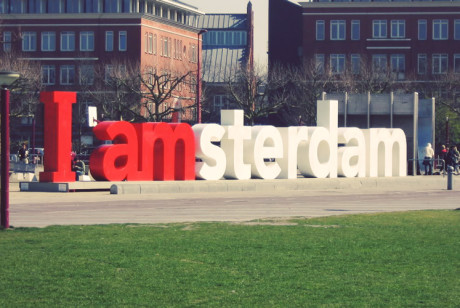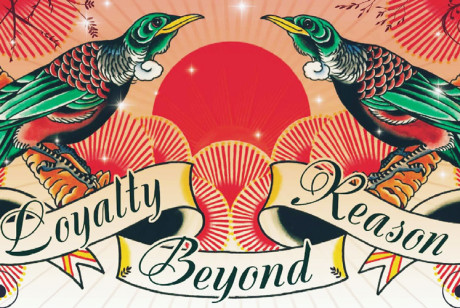Thinking Round Corners
Tuesday, 20 March 2001 - London, UK

Presentation Summary
An address to the Nature Publishing Group, no stranger to intellectual transformation – its flagship publication Nature has been thinking round corners since 1869. This speech looks at why transactions must develop into relationships; technophilia must be diverted into creativity; and the global must be transformed by the influence of the local.
Nature Publishing Group produces high-quality journals and books for the global science market. Its most familiar publication is the influential magazine Nature, which has published groundbreaking scientific papers since 1869.
The Nature Publishing Group asked me to talk about building great brands and the opportunities of the Internet. I’ve got a few things to brief you on, too, including the hottest thinking from Saatchi & Saatchi worldwide, and the marketing of some of the world’s great enterprises.
I checked you out before I agreed to speak, of course, because you just can’t wander into a bookshop and pick up a copy of Nature. More’s the pity. I knew that Nature was your flagship publication but I had not grasped the ambition and depth of your enterprise. Your remarkable history; your continuing impact on the world of science; your reach.
I had to wonder where a guy like me fits here. I found a simple connection. I co-publish a web site called www.nzedge.com. The New Zealand Edge. In part, the site was inspired by the observation of the theory of “punctuated equilibrium” propounded by the eminent evolutionary biologist Stephen Jay Gould – change first happens at and spreads from the edge. I’m from the edge of the world, literally and figuratively. nzedge.com is dedicated to a radically optimistic way of thinking about New Zealand’s identity, our stories, our achievements and our place in the world.
We tell the stories of New Zealand heroes whether they are speedsters like Bruce McLaren, adventurers like Edmund Hillary, and inventors like Richard Pearse who beat the Wright brothers into the air by several months. And heroes like our top scientists: Lord Rutherford – someone writing to our website this week called him the greatest experimental scientist ever; geneticist Maurice Wilkins, who first photographed DNA; mathematician Alexander Aitken, the human computer; and evolutionist Allan Wilson, graduate of the University of Auckland in my home city.
Nature carried Allan Wilson’s Eve Hypothesis in 1987 (see vol. 325). Wilson developed a “molecular clock” to suggest that all modern humans evolved from one “lucky mother” in Africa 200,000 years ago. His proposition was inflammatory and radical; creationists and anthropologists were incensed that their own theories had been upended. Now, of course, Wilson’s proposition is mainstream thinking.
Allan Wilson was a true edge thinker; from New Zealand he went to Berkeley, a university that’s always on the forefront in a city that’s always out there. Nature’s 1991 obituary for Allan Wilson illuminates my title: “While others concentrated on what evolution could tell them about molecules, Wilson always looked for ways that molecules could say something about evolution.”
Allan Wilson thought round corners. I had my link. So let’s think round corners. Here’s the first corner: we have to get past the sorry story of brands. Let’s face it: they have stalled. Trapped by process and too much information, they have simply run out of juice. The false promises of online advertising, customer relationship management and all the rest are just making it worse.
Over the last year I have delivered one message above all: without love, business isn’t going anywhere. I’m not talking wishy-washy, soft and fuzzy love. I’m talking in-your-face, heart-stopping love. The kind of love that drops into your life and changes it forever.
If you squirm when I put the “L” word and business in the same sentence, you’re not alone. Love is something we reserve for our families and friends, our kids and our dogs. This idea needs to change. Right now. Love is the new way of doing business.
My question is: if Love is so important to our lives, why are we so desperate to keep it out of business? And why, when I do put Love and business together, whether in Tokyo or Auckland, Portland or Sao Paulo, do people get it straight away?
The reason is simple. Last year I talked to the International Advertising Association here in London. My address was called “The Love Bug”, after the computer virus that had just unleashed mayhem around the globe. My point was simple: even hard-bitten computer guys opened up an attachment just because it appeared to come from someone they knew – or they’d like to know! The attachment’s title was “I love you”.
It wasn’t computer systems that the Love Bug attacked. It was human vulnerability, emotions and hope. This month human frailties are being tested again – this time by the “Naked Wife”! What happens when you click to get that video of a sexy spouse? A Trojan virus tries to delete your vital system files. Another sucker punch to the emotions. Just like “Anna Kournikova” that promised revealing pictures of the tennis mega-star. Anyone for tennis? – I don’t think so.
These viruses are all based on an insight into what makes human beings (ok, mainly men!) run. April Goostree of MacAfee.com got it: “Love is a pretty good topic to get people to open an attachment. But sex is an even better one.”
Since I joined Saatchi & Saatchi four years ago, world changing ideas have been my mission and thinking round corners my passion. It was the first time I had worked in advertising and I saw no future in its limited aspirations. I was appalled by the lack of energy and spirit. And I was saddened that so many great people seemed to be having so little fun.
Our first move was to drop “advertising” from our name. The advertising business was behind us. Our new role? To become the hothouse for world-changing creative ideas that transform our clients’ businesses, brands and reputations.
The challenge of reinventing Saatchi & Saatchi as an ideas company is at the heart of everything we do. People tell me that we live in the Information Age. We’ve been drowning in information for decades. The Age of Knowledge. It’s over. I say we have entered the Age of the Idea.
You want to cope with information overload? Have an idea. You want competitive advantage? You need ideas. You want product and service innovations? More ideas. Work smarter? Ideas again. And as for different ways to connect with customers – ideas are the only way you can create new kinds of lasting relationships both online and offline.
You know what I’m talking about; you’re in the ideas business, too.
We’re in a time of massive change. Every business book has hints on how to “manage change”. Forget it. Just try to grab hold, and go for the most exhilarating ride of your life. Tom Peters is now talking about leadership in a time of change. Where’s he been?
Managing is about doing things right. Leadership is about doing the right things. Both are table stakes. I’m into inspiration and spirit. Letting your people loose to be the best they can be. Believing in dreams. Making them happen. All with a focus close to obsession.
Over the past three years I have been working with colleagues from the School of Management at the University of Waikato in New Zealand. Our mission? To find better organizational principles to suit these ambiguous, creative times.
Our book Peak Performance: Business Lessons from the World’s Top Sporting Organizations has been published around the world.
Our conclusion? Ideas and inspiration and attitude rule!
To effect major change in marketing here are three corners to think round first.
1. Transactions have to be transformed into relationships.
2. Technophilia has to be transformed by creativity.
3. The global has to be transformed with insights from the local.
A powerful dynamic has been driving business for decades – a hard-fought shift in power from manufacturers to retailers. The impact for customers? Bugger all. The focus is still efficient transactions managed by business, for business.
A more radical shift is now gearing up. The nineties cliché of “customer focus” has a new cutting edge. It’s no longer what businesses agree to give customers; it is what customers are demanding. Customers are not interested in transactions powered by information. Forget one-size-fits-all brands. What customers want are intimate human connections and relationships.
Why does this shift matter? Here’s neurologist Donald Calne: “The essential difference between emotion and reason is that emotion leads to action while reason leads to conclusions.” For every one of our clients I’m after action. Fast connections. I need to touch the emotions, not give consumers more stuff to think about. For my clients I must be “Action Man”, not “I Think, Therefore I Am Man.”
Over the next decades we will face the widespread trauma of aloneness: marriage break-ups, single occupant households, an aging population. For the first time in human history, living alone will be the state of millions. Somehow families and communities, businesses and media – whether on- or offline – will have be transformed to meet these unmet emotional needs.
The second corner we have to think round right now is the absurd technophilia of the last five years. Get over it. Creativity and ideas are not device-dependent. Just because we can do something does not mean that it makes sense.
New technology changes everything and nothing. The fundamental challenge for businesses remains exactly the same: creating long-term emotional connections with customers through great creative ideas.
New technology changes everything. How people live, work and play. They can have entirely new experiences, more choices, more control. But this is hardly the vocabulary of emotion, right? We are still in the territory of conclusions, not action.
So, let’s not get ahead of ourselves. The Internet is another tool like television, or radio, or magazines, or point of purchase, or sponsorships. The Internet’s special value is that it offers very direct connections with customers. Think of Amazon with its outstanding service and personalisation. But I have seen little evidence of emotional bonds being created online. What I have seen is an astonishing transfer of information (and junk).
There has been major over-investment in the web relative to its marketing impact, its revenue potential or its ability to cut costs. It’s time for some serious soul searching. First, get over our latest toys. And then, come up with brilliant creative ideas that leverage all our opportunities, not just the mouse-driven ones.
My third corner to go around is transforming global marketing with insights from the local. Globalization in its many forms is the single biggest issue facing any CEO today. It has become highly politicized but at its core the goal is very simple: to market products and services in other countries and markets. Who doesn’t want this? It’s called export. Countries like New Zealand export or die. Today successful exporting depends on ideas.
Good ideas come from everywhere. When cappuccino and nachos and sushi went global, did it make them any less local? Of course not. Have a good idea and then make it a great idea by executing it brilliantly around the world. Fast. The gentlemen who founded Nature were responding to opposition to evolution and the demand for the latest in scientific discoveries. You have taken this very specific and local idea global.
I travel constantly and what I see are hybrids of the global and the local. The local is strong, eccentric and powerful. The local is where people live. No one feels they are a “global consumer” with “global values” and “global attributes”. Love is local, not global.
So yes, it’s back to Love. Once you accept its power a whole heap of stuff drops neatly into place – or out of the picture altogether. Check out what I call the Love/Respect Axis.
The High Respect quadrant is where most successful businesses fit along with their brands. Great products, solid customer research and mass marketing have added up to remarkable long-term achievements. Achievements focused on what I called the “e-r” words: better, faster, stronger, smarter. The Nature brand has got to be here.
The bad news is that this stuff is just what consumers have come to expect. You have to be in the High Respect quadrant simply to stay in the game. It’s in the High Love quadrant that the potential lies. It builds on respect (can’t do without it) but takes off with the emotional connections that create long-term value.
The best relationships in life draw on both High Respect and High Love. This is where we can make real emotional connections with our customers and create real value. This is where you have got to be with what I call Lovemarks.
Many brands won’t make it. They will struggle on with declining margins and indifferent customers and end up as commodity corpses. But some brands will make it to the future. They will be the ones that understand that the greatest relationships in life are built on Love.
At Saatchi & Saatchi we’re speaking to big brands about Lovemarks. They get it. They want it. Our clients are receiving in-depth, exclusive Lovemarks presentations.
I’m developing my ideas in public on my websites. It’s still a work in progress, so join in at saatchikevin.com and www.lovemarks.com.
The connection is simple. Great marketing is about emotion and empathy, seduction and dreams. So are Lovemarks. Lovemarks can generate extraordinarily useful insights through what I call the Lovemarker. Insights you can act on fast; insights that sprout ideas.
What makes Lovemarks so much more than brands is their Mystery, Sensuality and Intimacy. From this base, I have identified the fourteen elements of a Lovemark.
Great stories: Lovemarks thrive on the ancient human urge to trade great stories around the campfire. Zippos have these great stories – the lighter in the GI’s breast-pocket that saved him from a bullet, the Zippo that served as a rescue beacon. Stories of friendship, heroism and tragedy. What a legacy. But great stories are not only for action heroes. Nature must teem with the drama, the tensions, and the rivalries of brilliant minds pushing the limits. Let us hear these stories.
Secret Ingredients: Human beings crave the thrill of the unknown. Take the allure of Chanel No 5 – literally a love potion. Or Red Bull, the party mix of the dance scene. Just what is in the can? As for Nature, this is your king hit. You introduced us to Darwin and DNA. You are Secrets Central. Revel in them.
Past, present and future together: Deeply personal relationships come from shared histories and experiences. This is at the heart of the struggle for brand loyalty. Harley-Davidson understands. This super-smart bike company clawed its way from near bankruptcy by handing its history over to its customers. Or another great Lovemark – the T-Shirt. Born in 1942, it has become trademark style for men and women everywhere. Who can wear a T and not think of the grunts at Iwo Jima, Jimmy Dean, a pack of twenty rolled in the sleeve or, let’s face it, the sand soap Baywatch.
Taps into dreams: Lovemarks are infused with rich metaphors that inhabit our dreams. Anita Roddick knows this. The Body Shop articulates a dream for a better world. The Concorde became a Lovemark the moment in 1969 when its supersonic snout hit the sound barrier. And its grip on our dream life is how it may still triumph after the Paris disaster. In the 50s and 60s science wove the dreams of the future. They were bright dreams, confident of progress. Some of these dreams have turned dark and fearful. Leadership is needed – with a major infusion of optimism and emotion.
Mythic character: Lovemarks are often fronted by a great character drawing on the power of myth. Mickey and Ronald are obvious. Madonna has got to be close, as she heads from mere celebrity to mythological lover and now mother. Other mythic characters may be all too human – Richard Branson, for one? People want to be associated with his energy, his arrogance. Some of your editors sound pretty damn mythic, especially Sir Norman Lockyer who stuck to the post for 50 years!
Then there are qualities based directly on the five senses.
Touch: The most intimate of the senses. Coke knew it when it designed its classic bottle – and keeps re-issuing it in new materials. Anything that design impresario Philippe Starck touches has got it. In publishing, I can’t go past Visionaire magazine, one of the most sensuous packages of the last ten years.
Taste: Taste is largely social. People rarely choose to eat. The rituals of friendship and family, celebration and ceremony are rich sources for a Lovemark. The global march of both fast food franchises (such as McDonald’s, KFC, Burger King) and local tastes such as sushi and pizza testifies to the human passion for taste and experimentation.
Vision: Design is the single most important element of any product or service. Pump out as much content as you like. We’re in the attention economy, baby, and only design will create that second of suspended attention. The Dyson vacuum cleaner proved it, so does the Absolut vodka bottle transformed into a global icon by a smart idea. Vision can also show continuity and community. Ask any scientist how they feel about your masthead.
Smell: Those perfume samples in magazines are just scratching the surface. Nothing is more memorable than a smell. Human beings are obsessed by scents. Apparently, we can detect over ten thousand of them – so there’s still a lot of potential!
The scientists at consumer goods giant Procter & Gamble have been obsessed by smell for decades. For Americans, the washing powder Tide owns the crisp clean smell of fresh laundry. And how do you get a quick sale on a house? Fill it with the fragrance of coffee and biscuits. Humans just love to be led by the nose.
Sound: Saatchi & Saatchi recently sold a beer in South America on a simple sound – the ssssh of a cap coming off a bottle. Brahma beer quadrupled sales on the sound of ssssssh. It went viral. Customers just gestured ssssssssh to be served a chilled Brahma. Of all the senses, sound is one of the easier opportunities. But what is the sound of Nature? No idea? Get out there and invent it. When I hear your name it should thrum in my ear.
Drawing this Lovemarks checklist to a close are the elements that make up that illusive sense of intimacy.
Emotion: The beating heart of the Lovemark. Emotions are the engines of motivation. They make us take action. And they do it real fast. The controversial Benetton campaigns are classics of emotional power turning customers onto a brand – or just as firmly turning them off it.
Empathy: For any relationship empathy is the glue. Take the remarkable impact of talk show host and magazine magician Oprah Winfrey. Oprah has revolutionised the popular magazine business with her smoothing reassurances in O. As the New York Times remarked, the tone of the magazine is just like Obi-Wan Kenobi. But it works – O has had the most successful launch in decades. Oprah’s secret? Empathy. Not just caring and not just concerned; Oprah’s readers feel that she truly knows who they are. Nature and it readers also share a profound understanding that is at the heart of any successful relationship. But you should celebrate it. Empathy feeds on emotion. There is no escaping it.
Inspiration: And the final factor is always inspiration. This is the territory Nike mined so brilliantly until tripped up by the public furore over its labour practices. Publication in Nature is obviously inspirational for thousands of scientists around the world. The astonishing new Tate Modern serves as a cultural inspiration. While for me, in sport it has to be the New Zealand All Blacks.
So if those 14 aspects of mystery, sensuality and intimacy constitute a Lovemark, what are your chances of qualification? How does Nature stack up?
Despite the cliché of science as cool rationality, both your history and your publications tell me a very different story. A story of passion and dedication, of ambition and competition verging on mania, of strong personalities and breaking the rules.
But there are gaps. I asked what the sound of Nature is. How about the taste and fragrance? You have the stories, the dreams, the history, and the secrets of a great Lovemark. Admit the power of sensuality and articulate the inspiration and emotion you already feel.
Yours is the story of an enterprise determined to be first, to be best, to be most famous, to be most loved. Once more, I offer the “L” word. Love of knowledge, love of the community of ideas, love of the others engaged in the enterprise.
Never be afraid of Love.
